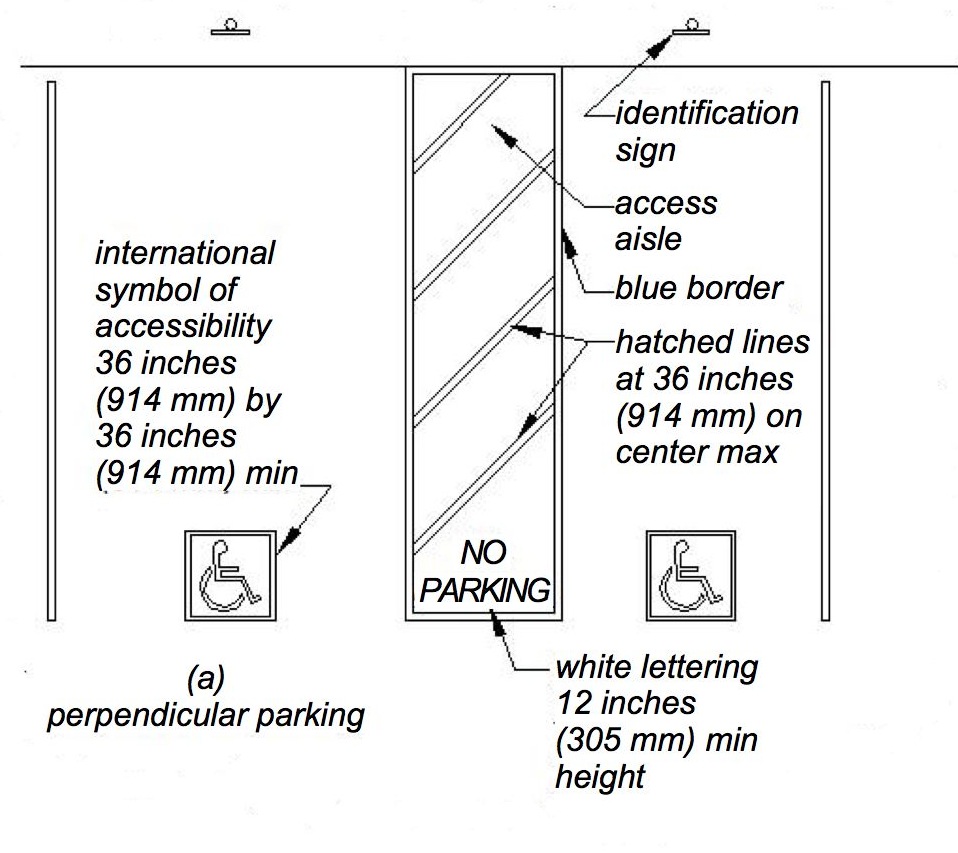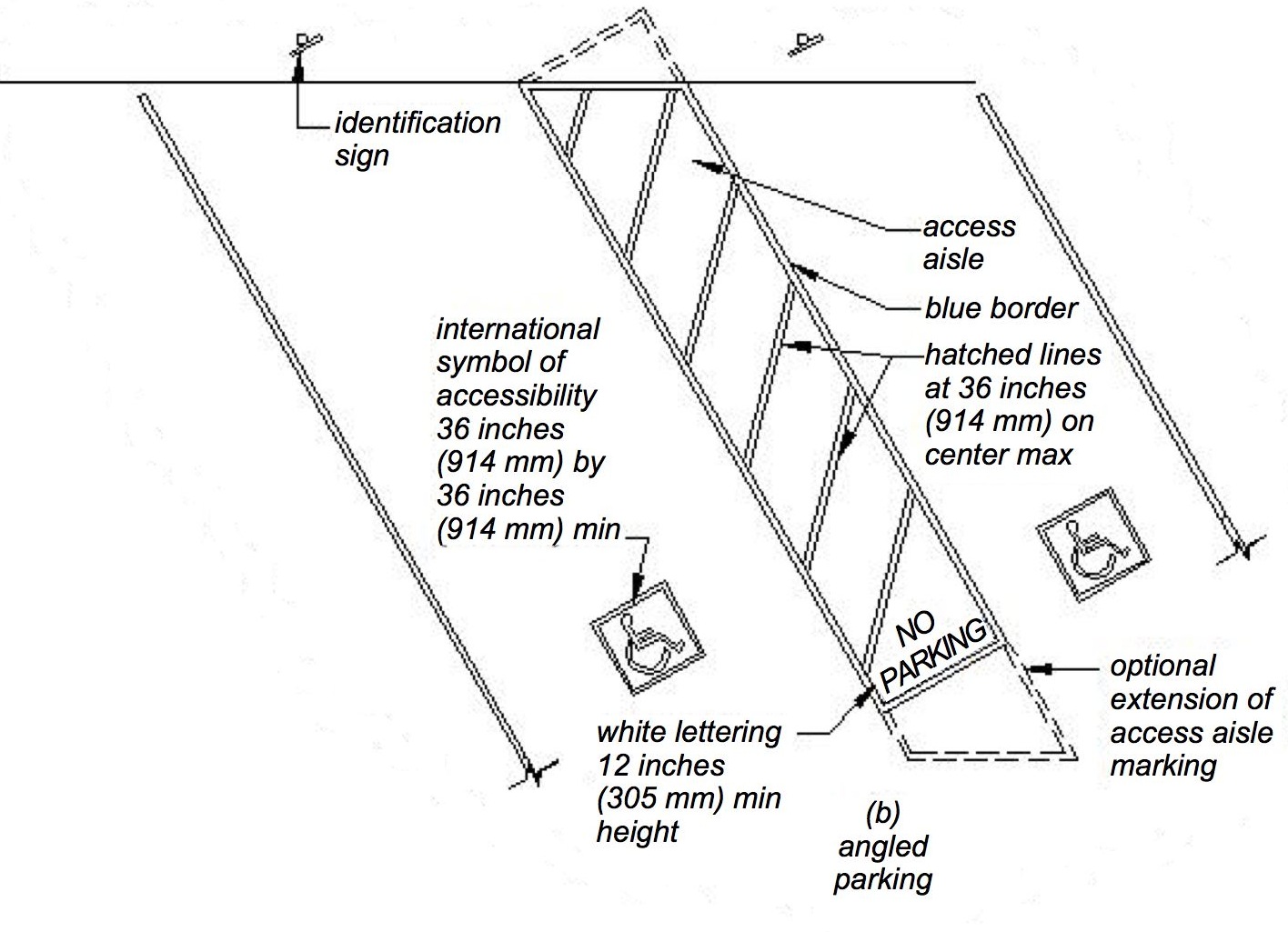2013 California Standards for Accessible Design Pocket Guide
11B-502.3.3 Marking.
Access aisles shall be marked with a blue painted borderline around their perimeter. The area within the blue borderlines shall be marked with hatched lines a maximum of 36 inches (914 mm) on center in a color contrasting with that of the aisle surface, preferably blue or white. The words "NO PARKING" shall be painted on the surface within each access aisle in white letters a minimum of 12 inches (305 mm) in height and located to be visible from the adjacent vehicular way. Access aisle markings may extend beyond the minimum required length.
[2010 ADAS] 502.3.3 Marking. Access aisles shall be marked so as to discourage parking in them.

Asphalt is often the parking surface material used at accessible parking spaces. Asphalt is generally considered to be fairly dark in appearance. In order to provide a suitable contrasting color at the hatched area of the loading and unloading access aisle, a light color hatching should be used at locations where asphalt is the parking surface material. Although white paint is preferred (and traditionally the color most often used), its use is not mandatory under the California Building Code (CBC).
In order to provide a suitable contrast at the hatched area of the loading and unloading access aisle in locations where light concrete is used as the parking surface material (such as at concrete parking garages), a dark color hatching should be used. Although blue paint is preferred, its use is not mandatory under the California Building Code (CBC).◼
ETA Editor's Note
The 2013 CBC marking requirements for accessible parking spaces and van accessible parking spaces are more extensive than those in 2010 ADAS.

ANGLED AND PERPENDICULAR PARKING IDENTIFICATION

ANGLED AND PERPENDICULAR PARKING IDENTIFICATION

User Comments/Questions
Add Comment/Question